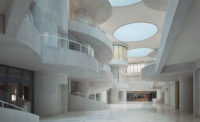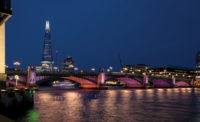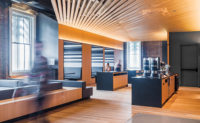Many Architects shun the notion of decoration—less is more and all that. But there are times when less is just less and the form clearly requires a dash of well-placed ornament to humanize it or improve its function. The designers of the projects that follow are all masters at transforming problematic interior spaces into wonderful places using material flourish, color, and humor. Here they demonstrate their skills with thoughtful solutions for a range of clients and locations that include a subterranean metro station in Naples, Italy (pictured above), a vast central market in Moscow, a department store in Seoul, and a small, lackluster office in San Francisco—all universal challenges that speak to design teams everywhere.
Karim Rashid
Naples, Italy
In An Effort to update its metro system, the city of Naples, Italy, has created a dozen art stations over the last decade, guided by Italian art critic Achille Bonito Oliva. The stations are filled with a range of contemporary works by local artists and international icons like Joseph Kosuth and Sol LeWitt. In 2004, they invited New York City–based artist and industrial designer Karim Rashid to bring his psychedelic sensibility to the University of Naples stop.
Working with the Milan firm Atelier Mendini, Rashid developed a scheme for the station integrating a textural mix of slick materials—from DuPont and Italian manufacturers Progetto Vetroand SITI Group—including: Corian, tile, marble, polished stainless steel, and glass or quartz printed with Rashid-designed patterns.
Now riders discover a new world belowground, where they are embraced by the soft nature and striking palette of the space, says Rashid. “I wanted to use the conceptual descent that takes place when entering the subway as a physical and mental transition for visitors.” Going from the open Neoclassical plaza into the subterranean station, commuters move from grayscale to Oz-like color. Floors in kaleidoscopic patterns and brilliant hues of blue, red, pink, and green intersect with highly reflective stainless steel ceilings and walls. But the color is not purely aesthetic. “Accent colors along hallways guide people to the platforms below,” says Rashid. And platform colors indicate the direction of incoming trains. Iconic touches like tile murals of Dante Alighieri and Beatrice on staircases orient commuters toward exits, he explains. “A person is in the station on average for three to four minutes. And in that time I want to communicate a place that stimulates, inspires, and exudes energy,” Rashid says.
People |
Products |
















Post a comment to this article
Report Abusive Comment